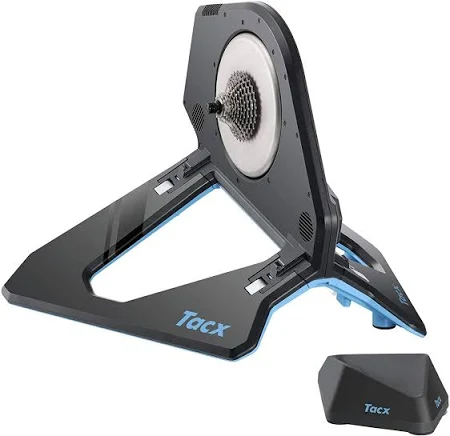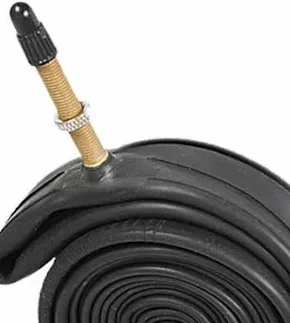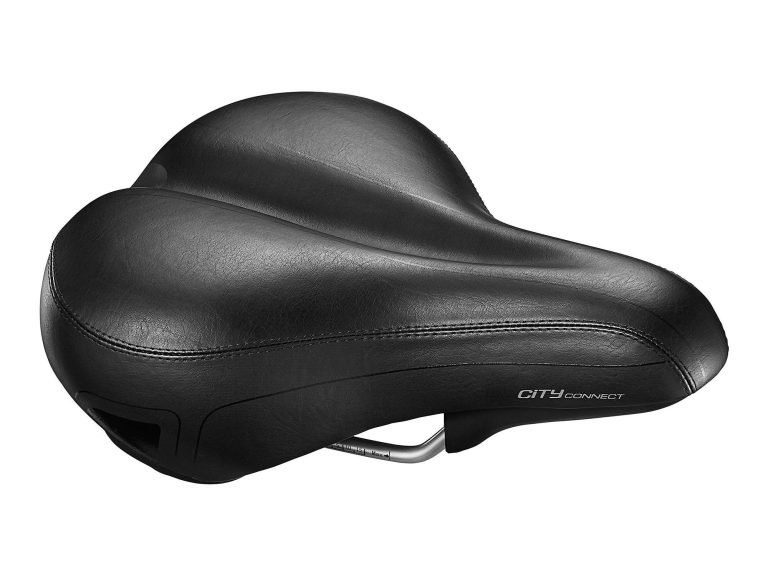Are you a cyclist looking to enhance your indoor training sessions? Look no further! This comprehensive guide to smart trainers is here to help you take your cycling experience to the next level. Whether you’re a newbie or a seasoned rider, this article will provide you with all the information you need to choose the perfect smart trainer for your training goals. From the different types of smart trainers available to their key features and benefits, we’ve got you covered. Get ready to revolutionize your training regimen and get the most out of your indoor cycling workouts with the help of a smart trainer.
Table of Contents
ToggleWhat is a Smart Trainer?
A smart trainer is a high-tech indoor cycling training device that connects to various cycling apps and platforms to provide a realistic and interactive training experience. It is designed to replicate the feeling of riding outdoors by simulating resistance, measuring power output, and offering interactive features such as virtual routes and training programs. With a smart trainer, you can bring your cycling workouts indoors and enjoy the benefits of year-round training regardless of the weather outside.
Definition of a Smart Trainer
A smart trainer, also known as an interactive trainer, is a stationary bike trainer that utilizes advanced technology to provide a more engaging and effective training experience. Unlike traditional trainers that rely solely on adjustable resistance, smart trainers use sensors to measure power output, adjust resistance automatically, and connect wirelessly to cycling apps and platforms through Bluetooth or ANT+ connectivity. This connectivity enables features such as virtual routes, interactive training programs, and data tracking, making your indoor cycling workouts more immersive and motivating.
Features of a Smart Trainer
Smart trainers come with a variety of features that enhance the indoor cycling experience. Some of the key features include:
- Power Measurement: Smart trainers accurately measure your power output in watts, allowing you to track your progress, set power-based training goals, and compare your performance with others.
- Adjustable Resistance: With smart trainers, you can vary the resistance level based on the terrain or training program you choose. Whether you’re climbing a virtual hill or doing a high-intensity interval session, the trainer adjusts the resistance automatically to match the intended workout.
- Wireless Connectivity: Smart trainers connect wirelessly to your smartphone, tablet, or computer through Bluetooth or ANT+ technology. This connectivity allows you to control and monitor your workouts, access training apps, and participate in virtual group rides.
- Realistic Riding Experience: Smart trainers simulate the feel of outdoor riding by replicating the resistance and inertia you would experience on the road. This allows for a more immersive and realistic training experience.
- Interactive Training Programs: Many smart trainers offer interactive training programs that guide you through structured workouts and adapt the resistance based on your fitness level and goals. These programs keep your training challenging and help you make progress.
- Data Tracking: Smart trainers provide detailed information about your workouts, including distance, speed, cadence, heart rate, and power. This data can be used for analyzing your performance, setting goals, and tracking your progress.
Benefits of Using a Smart Trainer
Using a smart trainer for your indoor cycling workouts offers several benefits that can greatly enhance your training routine.
Convenience of Indoor Training
One of the primary advantages of a smart trainer is the convenience it offers. With a smart trainer, you can cycle anytime, regardless of weather conditions. This allows you to stick to a consistent training schedule and avoid interruptions due to rain, snow, or darkness. Additionally, you can train from the comfort of your own home, saving you time and eliminating the need to travel to a gym or outdoor cycling location.
Accurate Power Measurement
Smart trainers provide precise and reliable power measurement, allowing you to track your progress and train with more efficiency. By knowing your power output, you can set specific training targets, monitor your performance, and adjust your workouts accordingly. This data-driven approach to training can help you optimize your training, avoid overtraining, and ensure you’re making the most of your indoor cycling sessions.
Realistic Simulation of Outdoor Riding
Smart trainers excel at replicating the feeling of riding outdoors. Through advanced resistance control and realistic inertia simulation, these trainers mimic the experience of riding on different terrains like hills, flats, or cobblestones. This means you can enjoy the benefits of outdoor training, such as hill climbs and interval sessions, without leaving your home.
Interactive Training Programs
Smart trainers often come with interactive training programs that add an element of fun and motivation to your indoor workouts. These programs can guide you through structured workouts, provide real-time feedback on your performance, and automatically adjust the resistance to match the intended training intensity. By incorporating gamification elements, social challenges, and virtual group rides, these programs make your training more engaging and help you stay motivated.
Types of Smart Trainers
When choosing a smart trainer, it’s important to consider the different types available. Each type has its own characteristics and may be more suitable for certain training needs or budgets.
Direct Drive Trainers
Direct drive trainers are the most advanced and accurate type of smart trainers. They eliminate the need for a rear wheel by directly connecting to the bike frame. These trainers typically offer the highest power accuracy and provide a more realistic riding experience. Direct drive trainers are also known for being quiet and stable. However, they tend to be more expensive and require a separate cassette to be installed on the trainer.
Wheel-On Trainers
Wheel-on trainers are an affordable and popular option for many cyclists. These trainers clamp onto the rear wheel of your bike, using a roller to apply resistance. While wheel-on trainers may have slightly lower power accuracy compared to direct drive trainers, they still provide an effective training experience. They are also more compact and easier to set up and store. The downside is that they can be noisier and may cause increased tire wear.
Rollers with Resistance Units
Rollers with resistance units combine the benefits of traditional rollers with the added resistance control of smart trainers. These trainers consist of a set of drums connected by a frame, onto which you balance your bike. Resistance is applied by the resistance unit, which usually uses magnets or fluid to provide adjustable resistance. Rollers with resistance units are great for improving balance and core stability, but they may require some practice to get used to. They are generally quieter and offer a more natural riding experience but may be less suitable for high-power training.
Factors to Consider When Choosing a Smart Trainer
When selecting a smart trainer, there are several factors you should take into consideration to ensure you choose the right one for your needs.
Compatibility with Bike and Wheel Size
Before purchasing a smart trainer, make sure it is compatible with your bike. Check the specifications to ensure it supports your bike’s frame and wheel size. Some trainers may require additional adapters or accessories to fit certain bike configurations.
Noise Level
Consider the noise level of the trainer, especially if you live in an apartment or share space with others. Direct drive trainers tend to be quieter compared to wheel-on trainers, but noise levels can still vary among different models. Look for trainers with noise reduction features or consider investing in a trainer mat to further dampen the sound.
Maximum Power Output
If you’re an advanced rider or plan to do intense training sessions, it’s important to consider the maximum power output supported by the smart trainer. Higher power outputs are often associated with better build quality, accuracy, and stability, but they may also come at a higher price.
Connectivity Options
Check the connectivity options of the smart trainer to ensure it is compatible with the devices and apps you plan to use. Most trainers support Bluetooth and ANT+ connectivity, but it’s always a good idea to verify compatibility with the specific devices and apps you intend to use.
Price
Smart trainers come in a range of price points, so it’s important to establish a budget and prioritize which features are most important to you. Consider the trade-offs between price, features, and performance to find the best value for your needs.
Setting Up a Smart Trainer
Once you’ve chosen and purchased a smart trainer, it’s time to set it up for use. Setting up a smart trainer typically involves assembly, installation, pairing with cycling apps, and calibrating the trainer for accurate power measurement.
Assembly and Installation
Follow the manufacturer’s instructions for assembling and installing the smart trainer. This may involve attaching the trainer to a trainer-specific riser block or mounting it onto a trainer mat for stability. Ensure that all components are securely fastened and that your bike is properly positioned and clamped onto the trainer.
Pairing with Cycling Apps
To take full advantage of the interactive features of your smart trainer, you’ll need to pair it with compatible cycling apps. This typically involves downloading the app onto your smartphone or tablet, creating an account, and following the app’s instructions to connect the trainer. Most apps will guide you through the pairing process, which usually involves selecting your trainer model and entering a PIN or verification code.
Calibrating the Trainer
Calibrating your smart trainer is essential to ensure accurate power measurement. Calibration adjusts the trainer’s power readings to match known values, providing consistent and reliable data. The calibration process can vary depending on the trainer model and app you’re using, but it typically involves performing a calibration ride or following the app’s instructions to complete the calibration process. Make sure to follow the manufacturer’s instructions carefully for the best results.
Popular Smart Trainer Brands
Several brands manufacture smart trainers, each with their own unique features and offerings. Here are some of the most popular smart trainer brands in the market:
Wahoo Fitness
Wahoo Fitness is known for producing high-quality smart trainers with advanced features and reliable accuracy. Their trainers are compatible with various apps and platforms, and they offer a range of models to suit different budgets and training needs.
Tacx
Tacx is a well-established brand in the cycling industry, offering a wide range of smart trainers designed to cater to different rider preferences. Their trainers are known for their accuracy, durability, and quiet operation. Tacx trainers are also compatible with a variety of third-party apps and software.
Elite
Elite is another reputable brand that produces smart trainers for cyclists of all levels. Their trainers are known for their realism, accuracy, and ease of use. Elite offers a range of models with different features and price points, ensuring there is an option for every cyclist.
CycleOps
CycleOps is a brand that has been in the smart trainer market for many years, consistently delivering reliable and durable trainers. Their trainers are known for their power accuracy and compatibility with various training apps. CycleOps offers both direct drive and wheel-on trainers to suit different needs and budgets.
Training with a Smart Trainer
One of the great advantages of smart trainers is the ability to enhance your training routines and take your indoor workouts to the next level. Here are some ways you can make the most of your smart trainer:
Creating Training Plans
Smart trainers often come with built-in training plans or allow you to create custom plans tailored to your fitness level and goals. These plans offer structured workouts that guide you through different training zones and intervals, helping you improve specific aspects of your cycling fitness.
Simulating Real-World Routes
Cycling apps and platforms connected to smart trainers often offer the ability to simulate real-world routes. This allows you to experience the feel of cycling famous routes or challenging terrains without leaving your home. You can choose from a variety of virtual routes ranging from scenic rides to iconic climbs.
Joining Virtual Group Rides
Many cycling apps and platforms host virtual group rides that allow you to ride alongside other cyclists from around the world. These rides typically involve real-time data and stats, creating a social and competitive atmosphere. Joining virtual group rides is a great way to stay motivated, push your limits, and connect with fellow cyclists from the comfort of your own home.
Monitoring Workout Data
Smart trainers provide a wealth of data about your workouts, including distance, speed, cadence, heart rate, and power output. Use this data to analyze your performance, track your progress, and set goals for future training sessions. Monitoring your workout data can help you make informed decisions about your training and adjust your workouts for optimal results.
Smart Trainer Accessories
To further enhance your indoor cycling experience and make your training more comfortable and enjoyable, consider investing in the following smart trainer accessories:
Climbing Blocks
Climbing blocks raise the front wheel of your bike, simulating the position of climbing a hill. They help to stabilize and level your bike while providing a more realistic riding position during intense climbing workouts.
Trainer Mats
Trainer mats are thick, durable mats that provide a stable and noise-reducing surface for your smart trainer setup. They protect your floor from sweat and provide a comfortable space for your bike and trainer during your workouts.
Heart Rate Monitors
Heart rate monitors allow you to track your heart rate during workouts, providing valuable insights into your cardiovascular fitness and helping you train in specific heart rate zones. Many smart trainers are compatible with various heart rate monitor brands and can display your heart rate data in real-time.
Cadence Sensors
Cadence sensors measure the number of pedal rotations per minute and help you maintain an optimal cadence during your workouts. They provide valuable feedback on your pedaling technique and allow you to maintain a consistent and efficient pedaling rhythm, ultimately improving your cycling performance.
Fan and Sweat Guards
Cycling indoors can generate a lot of heat and cause excessive sweating. A fan can help keep you cool during intense workouts and prevent overheating. Additionally, sweat guards or covers can protect your bike and components from corrosive sweat, prolonging their lifespan.
Smart Trainers vs. Traditional Trainers
While traditional trainers have their benefits, smart trainers offer several advantages that make them a popular choice among cyclists.
Features and Advantages of Smart Trainers
Smart trainers provide accurate power measurement, interactive training programs, realistic simulation of outdoor riding conditions, and connectivity to various cycling apps. This combination of features offers a more engaging and effective training experience compared to traditional trainers. Smart trainers allow you to track your progress, participate in virtual group rides, and push your limits with structured workouts tailored to your goals.
Cost Comparison
While smart trainers generally come at a higher price point compared to traditional trainers, the benefits they offer can outweigh the initial investment. The ability to train effectively year-round, the realistic riding experience, and the interactive features make smart trainers a worthwhile investment for cyclists looking to improve their performance, regardless of weather conditions or access to outdoor cycling routes.
Maintenance and Care
To ensure the longevity and optimal performance of your smart trainer, it’s important to follow proper maintenance and care practices.
Cleaning and Lubrication
Regularly clean your smart trainer to remove dust, dirt, and sweat that may accumulate during workouts. Use a soft cloth and mild detergent to clean the external surfaces and avoid spraying water directly on the trainer. Lubricate any moving parts as recommended by the manufacturer to ensure smooth operation.
Replacing Wearable Parts
Over time, certain parts of your smart trainer may experience wear and tear. Keep an eye on components such as belts, bearings, and rollers, and replace them as needed. Consult the manufacturer’s guidelines for instructions on how to replace wearable parts or seek assistance from a professional bike shop if necessary.
Storing the Trainer
When not in use, store your smart trainer in a clean and dry location. Make sure it is properly secured and protected from potentially damaging factors such as extreme temperatures, moisture, or excessive dust. Use a trainer mat or cover to further protect the trainer from dust and prevent any unwanted damage.
By following these maintenance and care practices, you can ensure that your smart trainer remains in optimal condition, providing years of reliable and enjoyable indoor cycling workouts.
In conclusion, smart trainers are revolutionizing indoor cycling by offering a more immersive, interactive, and effective training experience. With accurate power measurement, realistic riding simulations, and connectivity to various apps and platforms, smart trainers provide cyclists with the opportunity to train year-round and improve their performance. By considering factors such as compatibility, noise level, power output, connectivity options, and price, you can choose the right smart trainer for your specific needs and goals. With proper setup, regular maintenance, and the addition of accessories, you can enhance your indoor training routine and enjoy the countless benefits that smart trainers have to offer. So, hop on your bike, connect to your favorite cycling app, and bring the joy of outdoor cycling indoors with a smart trainer.







